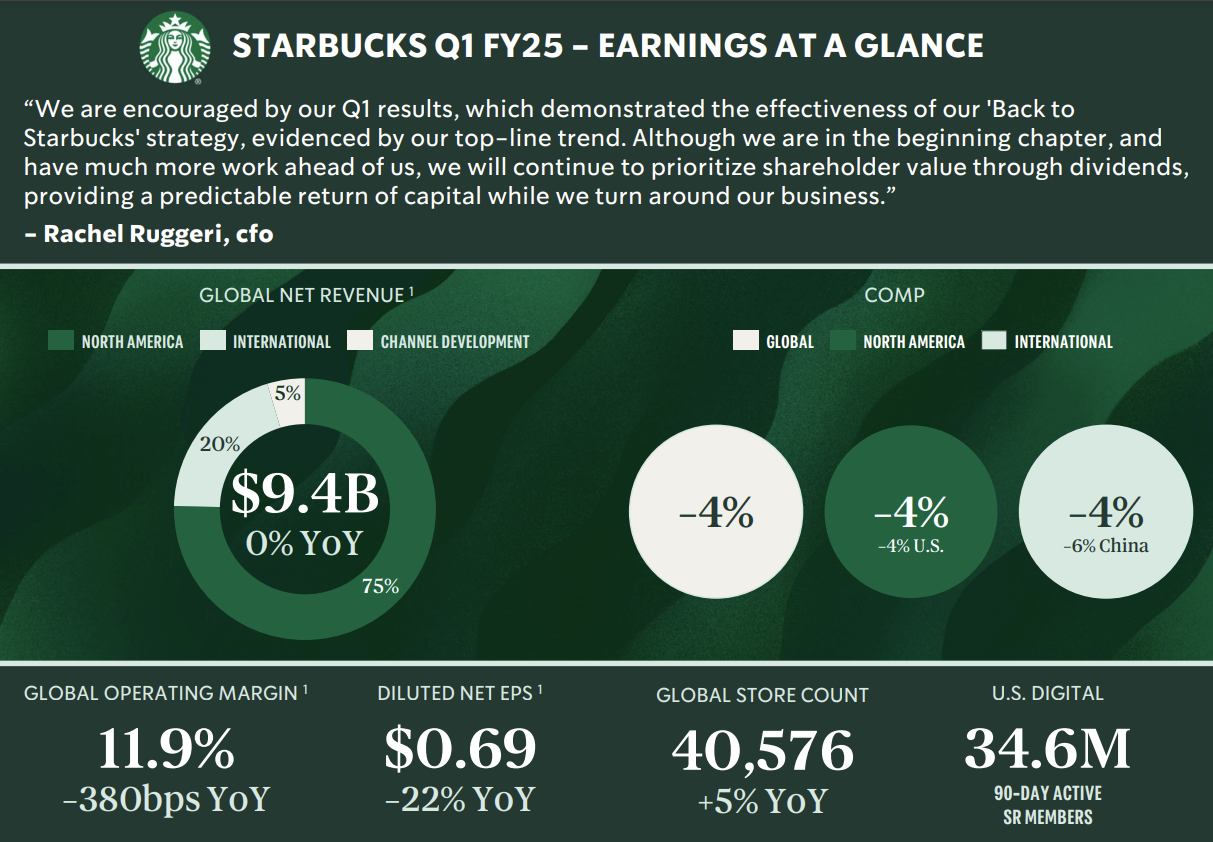Starbucks is leaning in on process improvement for mobile orders, optimization and technology to get wait times down to 4 minutes in most of its cafes, said CEO Brian Niccol.
Niccol, who joined the company from Chipotle and outlined Back to Starbucks plan to reinvigorate the brand and sales, talked process on the company's first quarter earnings call. The efforts at Starbucks are worth watching given that they reside at the intersection of process, customer and employee experience and omnichannel retail.
- Starbucks lands new CEO from Chipotle: Here’s how digital strategy could change
- Starbucks: ‘We can enhance our tech stack to lower costs and reinvest’
Starbucks said the company is investing in labor, marketing, technology and stores to stabilize the business and revamping support teams to execute on its Back to Starbucks plan
Speaking on a conference call, Niccol said:
"The handoff from our barista to the customer is our brand moment of truth, and we've been working hard to get that moment right. Through the quarter, we've continued to test and learn as we position the business to achieve our four-minute throughput goal with a moment of connection."
Niccol added that order sequencing is everything and has created more of a bottleneck than capacity. "Investments in staffing and deployment, processes and algorithm technology demonstrate the greatest opportunity to deliver a four-minute wait time in most of our cafes," he said.
To improve the process, Starbucks is:
- Optimizing labor with precision scheduling and adding coverage hours.
- Simplifying beverage builds with new brewed coffee and tea routines.
- Improve processes in-store and via mobile ordering. Starbucks is reducing its menu selections by 30% in both food and beverages.
- Starbucks also optimized its supply chain to fund further investments.
- Creating a Chief Store Officer role to "be all about driving excellence in our stores."
- Betting that improvements in the partner experience boosts customer experience.
Niccol said:
"Looking forward, we're beginning to pilot a new in-store prioritization algorithm and are exploring other technology investments to improve order sequencing and our efficiency behind the counter. We're also progressing efforts that build on the strength and popularity of the Starbucks app. This includes development of a capacity-based time slot model that allows customers to schedule mobile orders and a midyear update that will simplify customization options, improve upfront pricing, and provide real-time price changes as customers customize beverages.
Lastly, we're planning to fully deploy digital menu boards in cafes across our US company-owned stores over the next 18 months to make our offerings more easily understood and to better show customization add-ons."
The working theory is that Starbucks can improve the customer experience, simplify and drive repeat business.
Niccol added that it's still early in the process. Starbucks’ earnings in the first quarter met expectations, but indicate the company has a lot more work to do.
Starbucks first quarter revenue was $9.4 billion, flat compared to a year ago. US same store sales fell 4% in the first quarter, but showed improvement through the quarter. Ticket growth in the US was up 4% and Starbucks curbed discounting.



